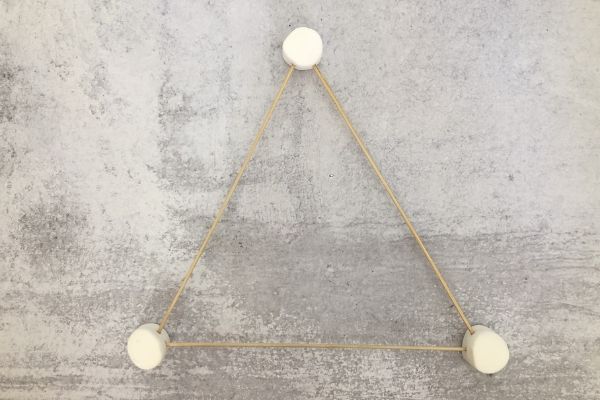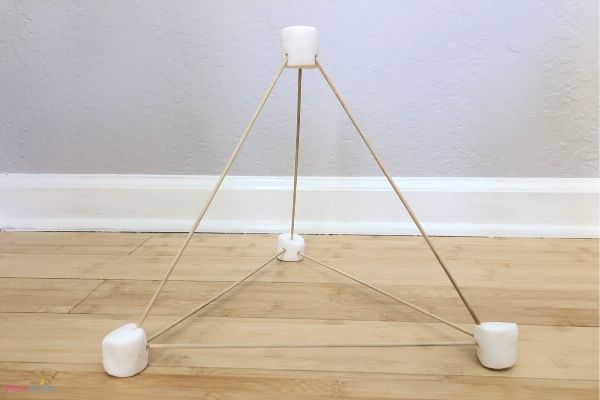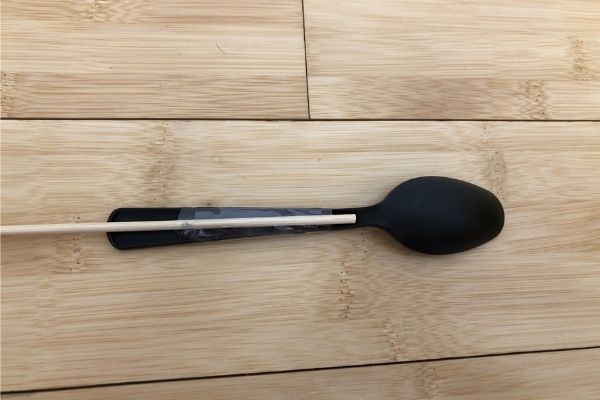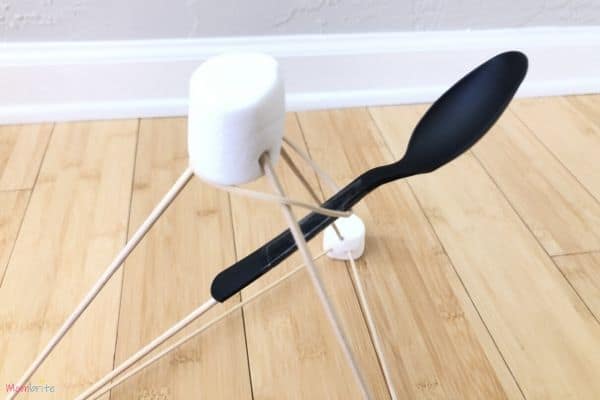Making a DIY marshmallow catapult has never been so easy. With just a few supplies, you and your kids can make one that can shoot mini marshmallows across the room!
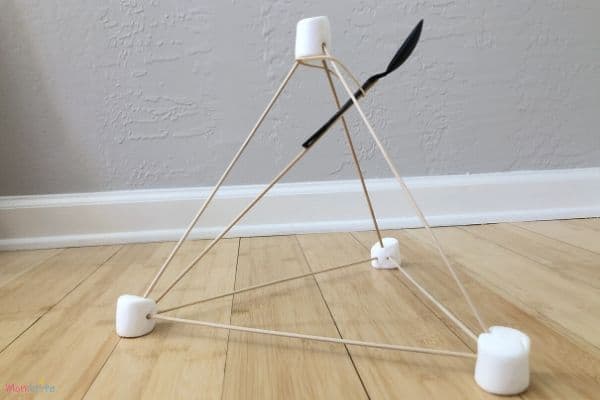
You may have made catapults out of popsicle sticks before that can launch mini marshmallows in the air. However, have you ever built a catapult out of marshmallows that can also launch marshmallows?
The idea seems silly at first. After all, all we have been doing with marshmallows is eating them after heating them in the microwave or toasting them in the oven But the marshmallow catapult really works! And you can build it within a matter of minutes.
How to Build a Marshmallow Catapult
Materials:
- 4 marshmallows (regular or jumbo)
- 7 skewer sticks
- 1 thin rubber band
- 1 plastic spoon
- Tape
- Mini marshmallows (or Cheerios or pom poms. Anything that fits on the spoon will do as the projectile.)
Instructions:
- Form a triangle with the marshmallows as the corners and skewer sticks as the edges. This will be the base of your tetrahedron.
- From a tetrahedron by using one more marshmallow as the vertex (tip) of the tetrahedron and 3 more skewers as the lateral edges.
- Tape a skewer stick to the back of the plastic spoon.
- Place the rubber band over the tip of the tetrahedron so that it loops around all 3 skewers.
- Feed the spoon through the rubber band and insert the other end of the skewer stick into one of the marshmallows of the base.
- Place a mini marshmallow on the spoon, pull back the spoon, and launch the marshmallow in the air!
One thing you might notice is that you need to be gentle with the marshmallow catapult. After all, it’s being held together by soft, fluffy marshmallows! For younger kids, I recommend waiting to play with the catapult until the marshmallows stiffen up. Leaving the catapult overnight should do the trick. You can also stiffen up the marshmallows before constructing the catapult by leaving them out of the bag.
This marshmallow catapult is a great opportunity to teach your kid about triangles and tetrahedrons. You can introduce or review the vocabularies base, corner, edge, vertex, and even talk about the faces of the tetrahedron. For older kids, you can also go into how to determine the angles and height of the tetrahedron.
Science Behind the Marshmallow Catapult
Just like the popsicle stick catapult, the marshmallow catapult is a good demonstration of Newton’s Laws of Motion. You can read about the scientific explanations and learn how to make different popsicle stick catapults here.
For younger kids, I like to focus on explaining potential and kinetic energy. The marshmallow catapult stores potential energy until you release the spoon. You store energy in the rubber band when you stretch it. You can hand your kids rubber bands and ask them to stretch it and explain how the pulling sensation they feel is potential energy.
The more you pull back the spoon, the more potential energy is stored. When the spoon is released and propels forward, the potential energy converts to kinetic energy due to its motion. Therefore, the more you pull back, the farther the mini marshmallow will go.
Additional Experiments
- Shorten or lengthen the skewer the spoon is attached to. How does the length of the skewer (lever) affect the projectile distance?
- Use a thicker rubber band. How does the thickness of the rubber band affect how far the mini marshmallows fly?
- Use a longer rubber band. How does the length of the rubber band affect how far the mini marshmallows fly?
- Use a heavier projectile instead of a mini marshmallow. Does the weight of the projectile affect its travel distance?
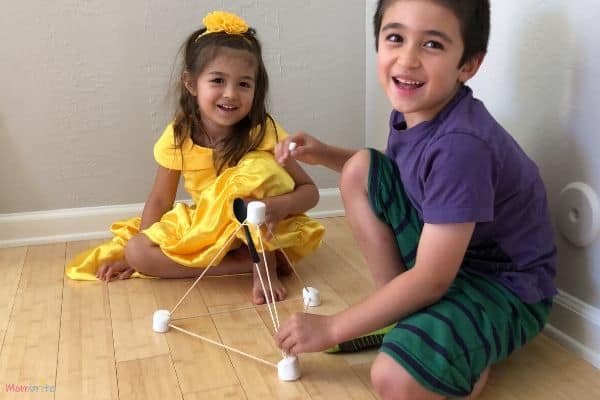
Final Thoughts on the Marshmallow Catapult
My kids had a lot of fun launching the mini marshmallows. You can place a clean container in front of the catapult so that you can still eat the mini marshmallows after launching. That or you can try and launch the marshmallows into your kids’ mouths, but that would be pretty hard.
Do be careful handling the skewer sticks with your kids because they have pointing ends. Especially when they try to insert the skewers in the marshmallows, make sure they don’t place their hands on the other side of the marshmallow and get pricked.
Make sure you check out the popsicle catapults as well as other ways to experiment with marshmallows!

